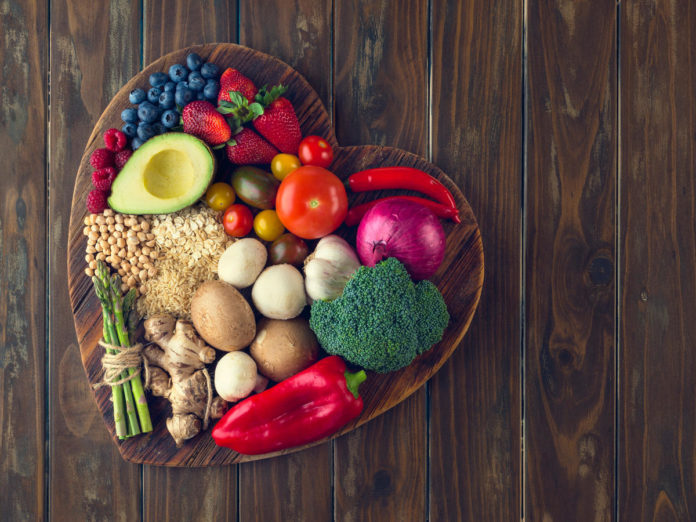Food is any nourishing substance that is eaten, drunk, or otherwise taken into the body for energy, growth of life and drive sustainability.
Globalization in simple terms means the movements, exchanges and sharing (of human beings, goods, and services, capital, technologies or cultural practices) all over the planet. One of the effects of globalization is that it promotes and increases interactions and inter dependencies between people of different geographical locations, regions and populations around the globe.
Globalization of Food
Most people consider food a local, individual choice based on personal preferences but in today’s era food has become a “new global commodity”. Hence like other commodities it is also traded, marketed by transnational corporations, health institutes, advertising campaigns, and subtle and not-so-subtle cultural messaging through global media such as movies, television, and various social media channels for economic benefits. In her work on food and globalization, anthropologist and food studies specialist Lynne Phillips points out the “crooked pathways” (2006, 38) that food takes to become a global commodity.
Beside direct reasons of monetary benefits, there are unavoidable indirect reason like cultural diffusion driven by Diaspora. Diaspora are created when people disperse, due to global migration, across geographical boundaries but remain connected to places that are imagined to be ‘home’. Diaspora communities do not fit tidily into formal geographical and national boundaries.
Diasporic cultures can fuse with different cultures, creating new syncretic styles that may transform mainstream national cultures. Displaced food cultures may become indigenised or accepted as an addition to local food cultures e.g. American apple pie and British fish & chips or it may mix with local food cultures known as hybridisation and creates new syncretic cultures e.g. Chinese nouvelle cuisine.
Thus Globalisation means that food cultures are on the move; they are being displaced from their roots and are often forming new hybrid cultures when they interact with other food traditions. Here we look at the impact of cultural diffusion and corporate glocalisation. “Glocalization” is the strategy of introducing well-known international brands into another country with appropriate local adaptations.
McDonald’s is a good example where the company modifies its offerings to fit better local consumption preferences to maintain global dominance of the food industry. This is exact reason why Macdonald’s burgers taste differently in different geographical locations for example there is stark difference between India and Europe and even Italian Pizza is not the same when you compare India vs. Italy. Another big example is Chinese food where there are varieties available across the world.
Food Globalisation not only limited to changing the food we eat but very discreetly also “ways we eat those foods”. Traditional Indian’s are adapting eating with fork & spoon and moving towards western culture from their own tradition way of eating with fingers which is assumed to feed soul.
Similarly on the global stage, some food cultures have become dominant. For example, the hegemony of Italian coffee culture means that many English-speakers will order a latte rather than ask for a milky coffee.
Its because of globalization only, worldwide, access to nutritious and affordable foods is growing increasingly unequal. Areas with inadequate or unreliable access to nutritious foods are sometimes called food deserts. Food deserts present serious challenges to health and wellness in multiple ways and have been linked to eating disorders, obesity, and malnutrition.
There are also food oases, areas that have high access to supermarkets and fresh foods, and these are growing in number. Some are in urban or suburban areas, and some are in rural areas where sustainable farming supports a local community.
Globalization expands our palates, fosters the sharing of diverse culinary traditions, and enables year‐round access to fresh and healthy foods—championing free markets and transcending countries’ often‐stark geopolitical, cultural, and ideological divides.
Geographic Factors Influence Food Production and Distribution Around the World in various ways.
The most obvious support or determinant of the spatial distribution of economic activity is geography: the degree to which locations are amenable to human habitation, output production, and the transport of goods. These geographical characteristics are frequently referred to as “first nature,”.
But while the characteristics that constitute first nature are for the most part fixed over time, the effect that these characteristics have on the concentration of economic activity may alter in response to technological change (e.g., air conditioning and irrigation) as well as structural transformation (e.g., the Agricultural and Industrial Revolutions). Changes over time in the roles of geographic characteristics have not been well studied.
Geographical location is another cultural factor that influences global food patterns. The availability of certain types of food in a region is largely determined by its climate and topography. For instance, coastal regions often have a diet rich in seafood, while regions with fertile land are more likely to have a diet based on crops. This geographical influence on diet has led to the development of regional cuisines, which are then spread globally through migration and globalisation.
Law of the land of a particular geography also impacts globalization for example Halal foods are considered as lawful and permitted to be eaten by those observing Islamic rule where as Muslims are not allowed to consume foods or beverages that are Haram or forbidden.
Religious sentiments of a particular geography also impact food globalization f. For instance, in Hindu culture, the cow is considered sacred and therefore beef is not consumed. Similarly, in Islamic and Jewish cultures, pork is prohibited. These religious beliefs significantly influence the dietary habits of these cultures and consequently, the global food patterns.
Government policy (subsidy and grants) of a particular geography also impacts production & distribution of food where open economies develop faster globalization as compared to closed economy. Borders, trade agreements, and government policies impact the flow of food across regions and countries. Tariffs, quotas, and subsidies can either facilitate or hinder the movement of food products, affecting prices and availability for consumers. Political geography also plays a significant role in food distribution
Culture of a geography factors significantly influence & play a pivotal role in shaping global food patterns. Every culture has its unique set of food preferences and dietary habits, which are often passed down through generations. Moreover, the cooking methods used in different cultures also influence global food patterns.
For instance, the use of spices in Indian cuisine, the fermentation process in Korean cuisine, or the raw food tradition in Japanese cuisine, all contribute to the diversity of global food patterns. These cooking methods not only define the taste and texture of the food but also its nutritional value, thereby influencing food consumption habits globally.
Historical events also play a significant role in shaping global food patterns. For instance, the Columbian Exchange, a period of cultural and biological exchanges between the New and Old Worlds, introduced many staple foods like potatoes, tomatoes, and maize to Europe and wheat and cattle to the Americas. This exchange significantly altered the food patterns of these regions.
Physical geography aspects such as climate, soil type, and topography significantly influence food production systems. Physical geography plays a crucial role in determining the type and quantity of food that can be produced in a particular region.
For instance, the climate, which includes factors such as temperature, rainfall, and sunlight, directly affects the growth of crops. Certain crops require specific climatic conditions to thrive. For instance, wheat and barley grow best in temperate climates, while rice and sugarcane require tropical climates. Changes in climate, such as global warming, can therefore have significant impacts on food production.
Soil type is another critical factor. Different crops require different soil types to grow optimally. For example, potatoes grow best in sandy soil, while clay soil is ideal for rice. The nutrient content of the soil also affects crop growth. Fertile soils, rich in nutrients, are more conducive to crop growth than infertile soils. Soil erosion and degradation, often due to overuse or poor farming practices, can lead to a decrease in soil fertility, negatively impacting food production.
Topography, or the physical features of the land, also influences food production. Flat, low-lying areas are often ideal for farming as they are easier to irrigate and cultivate. In contrast, hilly or mountainous regions can be challenging for farming due to difficulties in irrigation and the risk of soil erosion. However, some crops, such as tea and coffee, thrive in high-altitude areas.
Water availability is another key aspect of physical geography that affects food production. Areas with abundant freshwater resources can support a wide variety of crops, while arid regions with scarce water supplies are limited in the types of crops they can grow.
In conclusion, physical geography aspects are fundamental in shaping food production systems. They determine what crops can be grown, how much can be produced, and the methods used in farming. Understanding these factors is crucial for sustainable food production and for addressing challenges such as climate change and soil degradation.
This diversity of geography has led to a variety of cuisines, each with its own unique flavor profile. For example, the cuisine of northern India is known for its use of spices, while the cuisine of southern India is known for its use of coconut and lentils.
Distribution” refers to the way something is spread out or arranged over an area.
Distribution channels affect your product availability, accessibility, visibility, and profitability. Geographic segmentation is a strategy where a market is divided into different geographic units based on factors such as location, climate, population density, and cultural preferences.
Geographic segmentation is a crucial strategy for optimizing distribution channels because it recognizes and leverages the diversity and uniqueness of different geographic regions.
This is because geographical features include mountains, deserts, and water, which directly impact the movement of people and thus the movement of trade.
From the natural features of the land to human-made infrastructure, geographical factors influence every aspect of the food system. Human settlement patterns influenced by geography affect food distribution networks. Urban areas with dense populations require efficient transportation and distribution systems to supply food to residents. Conversely, rural areas may rely more on local markets and direct farm-to-consumer sales. Political geography also plays a significant role in food distribution.
By: Aditya Soni
Write and Win: Participate in Creative writing Contest & International Essay Contest and win fabulous prizes.

















